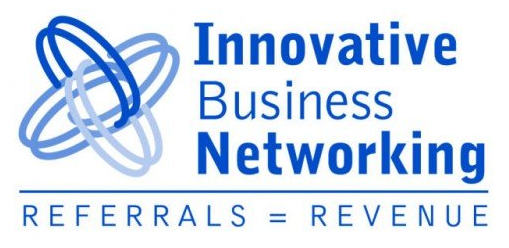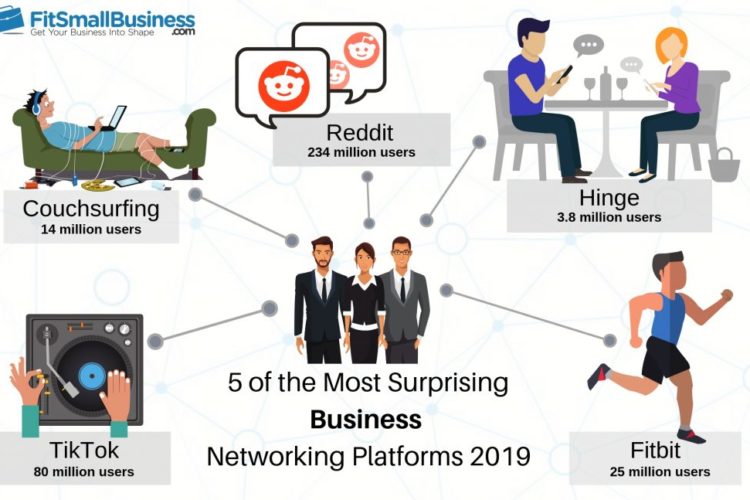There are three things that set any business person apart from the rest of the pack.David Meltzer, Entrepreneur, CEO and Founder, Sports 1 Marketing
- The energy she carries.
- The situational knowledge she has.
- How she leverages relationship capital, not only of herself but of others.
Energetic first steps
The first step when you have identified an event, a place or a situation where you can network is simply to put yourself into the right frame of mind. First, think of yourself as an equal. You mustn't think of yourself as separate, inferior or even superior. Don't fall victim to your ego! Envision yourself on a level playing field. If you don't have the right energy before you step into a networking or connection situation, then you must shift your energy. I can't tell you how many times that I've entered a room of my own family where I've felt separate, inferior or superior. And it always tends to make situations worse. This is why we must first have our energy aligned and be connected as one. You must feel like you belong, especially if you're younger and you don't have many relationships that you can leverage. If you don't carry the right energy when networking, you will not be very successful.Bring your value
When you walk into a room, you want people to feel and know that you provide value, and can be of service. Also that you're radically humble and can ask for help. I want the energy that I carry to utilize the 100/20 Rule: Everyone who speaks with me or meets me knows that I'm giving much more value than I'm asking for. Networking will be easier if you have a simplified approach to your interactions or connections. Once you have the right energy, make sure you maintain eye contact, smile and always have at least one question to ask.Second, that emotion
When formulating your question, remember that people "buy" on emotion for logical reasons. Therefore, it's a good idea to connect emotionally. Emotion is energy in motion. There are numerous ways to establish an emotional connection from the outset. You can share a passion for a sports team, for the place where you grew up or the community you serve. If you both have children, you can talk about their school activities. Or anything that's important to you, and in common with the other person. Finally, when networking, be "more interested than interesting." Simply put: Find out what they know, rather than showing off what you know. A key part of networking is making sure you have a simple system in place to keep track of the people you meet. That way you can easily keep in touch with them and deepen your emotional connection. Exchange contact numbers on the spot by having them call your mobile phone with theirs. In the same day you meet them, send an invitation to connect on LinkedIn. At home, or in your office, do not file business cards alphabetically. Rather, put them in order of importance -- or strongest influence -- or in the order of generating most to least ROI. And keep them in plain sight on your desk as a reminder to follow up. Remember when putting together your system: The universe loves simple.Making new relationships ... indirectly
One of the best ways to build new relationships is a bit counterintuitive in that you do not interact directly. I learned this from my mentor, Leigh Steinberg, when we were recruiting athletes at his sports agency. We utilized spheres of influence. In other words, we leveraged the connection someone else had to the people we wanted to meet. It's an organic and authentic way to meet an important person you can't just pick up the phone and call. What many people fail to realize is that having an individual who's more than one degree of separation from your target prospect can be more effective than you actually pitching your target. This is because now you have an unbiased, credible referral source who is aligned with your vision.Network and thrive
When you can effectively connect without the ego's need of being separate, inferior or superior, you leverage more than just your situational knowledge, you include others' as well. Not only can your relationship capital, and that of your mentors, help to accelerate your networking (and career) but utilizing the spheres of influence can, too. Most importantly, make a point to connect emotionally, then develop a process or system to continue to connect to those people emotionally. For example, if you connected on both of your kids' school activities, you can check in once in a while to inquire about their progress. When you effectively connect to others and provide value, you can easily connect to what inspires both of you. If you bring the right energy to your networking and connect to goodness, you'll exponentially experience more success and happiness.
15.10.2019
IBN
standart
Kelly Main, FitSmallBusiness.comNeed to build your professional network? Scrap the old-school networking platforms like LinkedIn and go with something far more avant-garde—like a hookup app. Apps like Hinge and Tinder aren’t exactly synonymous with career advancement, but with approximately 34 million Americans using dating or social networking apps, there are bound to be some in the mix who are better professional connections than romantic ones. No wonder, then, that an increasing number of users are signing on to pursue professional growth—not personal desire. To see just what surprising business and career growth opportunities exist in the digital ether, we researched unconventional networking channels that can help you make smart money moves. The digital platforms we compiled met these baseline criteria:
- Not business-specific: None of the social platforms on the list is primarily designed for business use.
- Available for free: Each platform had to be available for free with no subscriber limitations (i.e., no invitation or special code required).
- 1 million and over user base: Our inclusions all have a user base of at least 1 million members.
- Available nationwide: Every app or social platform is accessible across the U.S.
- Of general interest: None of our chosen platforms is niche-specific, opening them up to users of all backgrounds and interests.
1. Reddit
What it’s designed for: User-generated social news Number of users: Estimated 234 million
2. TikTok
What it’s designed for: Short-form video sharing Number of users: Estimated 80 million
3. Foursquare
What it’s designed for: Local business search and discovery Number of users: Estimated 50 million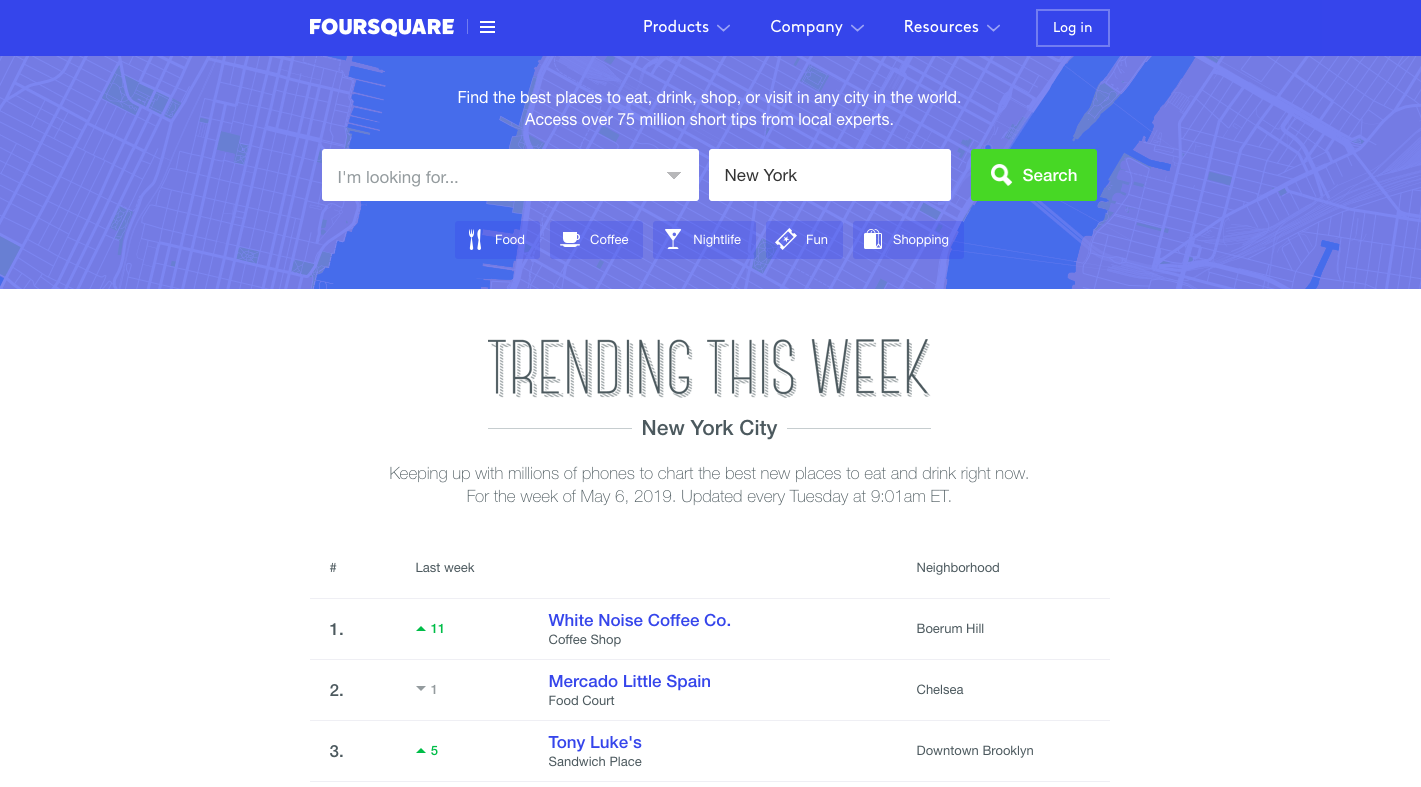
4. Mix (formerly StumbleUpon)
What it’s designed for: Discovering unique and interesting things online Number of users: Estimated 40 million
5. Meetup
What it’s designed for: Organizing online groups and in-person social events Number of users: Estimated 35 million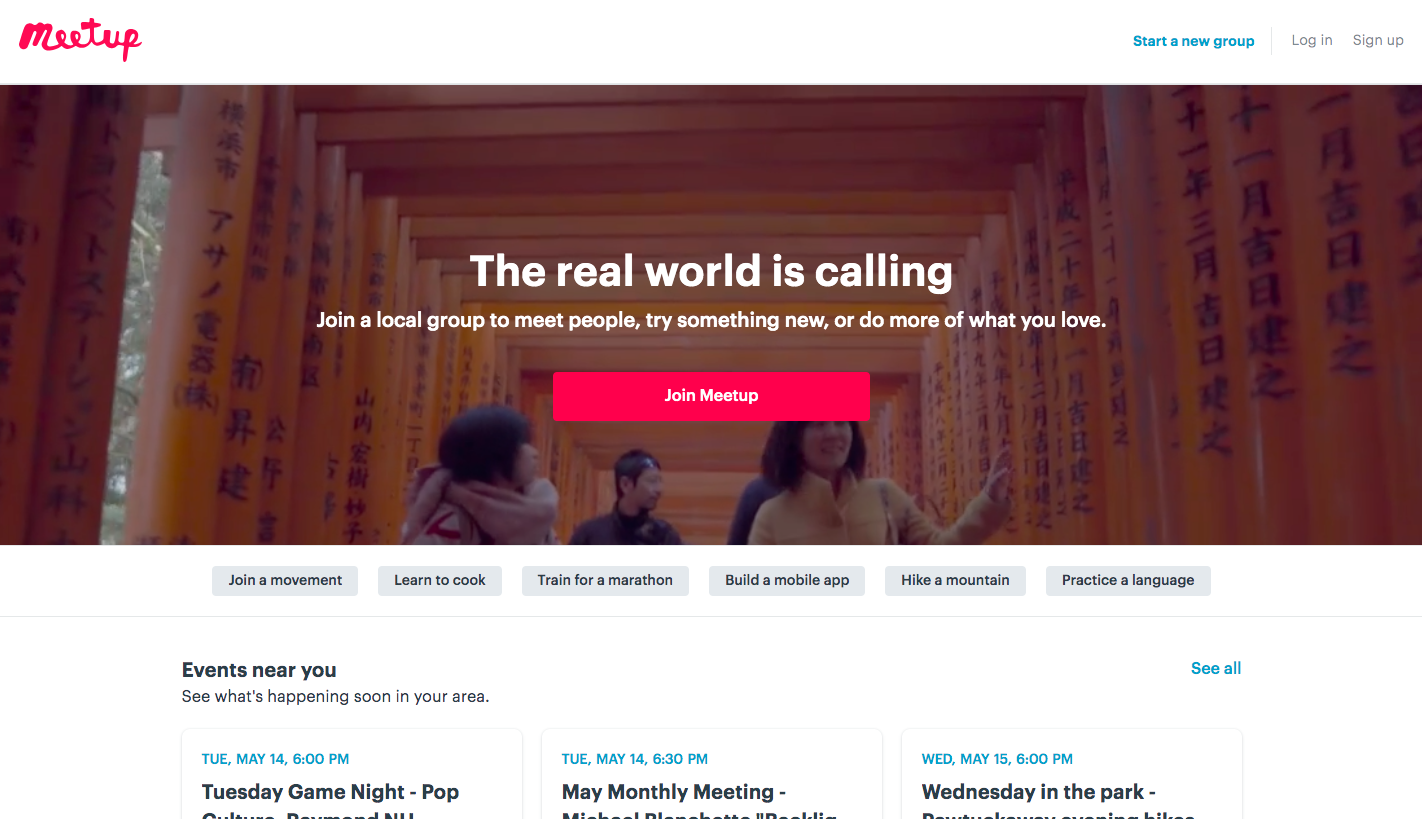
6. WeHeartIt
What it’s designed for: Sharing inspiring images Number of users: Estimated 30 million
7. Fitbit App
What it’s designed for: Fitness and health tracking Number of users: Estimated 25 million
8. Goodreads
What it’s designed for: Connecting readers and sharing book reviews Number of users: Estimated 25 million
9. Whisper
What it’s designed for: Anonymously sharing secrets publicly Number of users: Estimated 20 million
Whisper for networking
10. Couchsurfing
What it’s designed for: Hospitality and home sharing Number of users: Estimated 14 million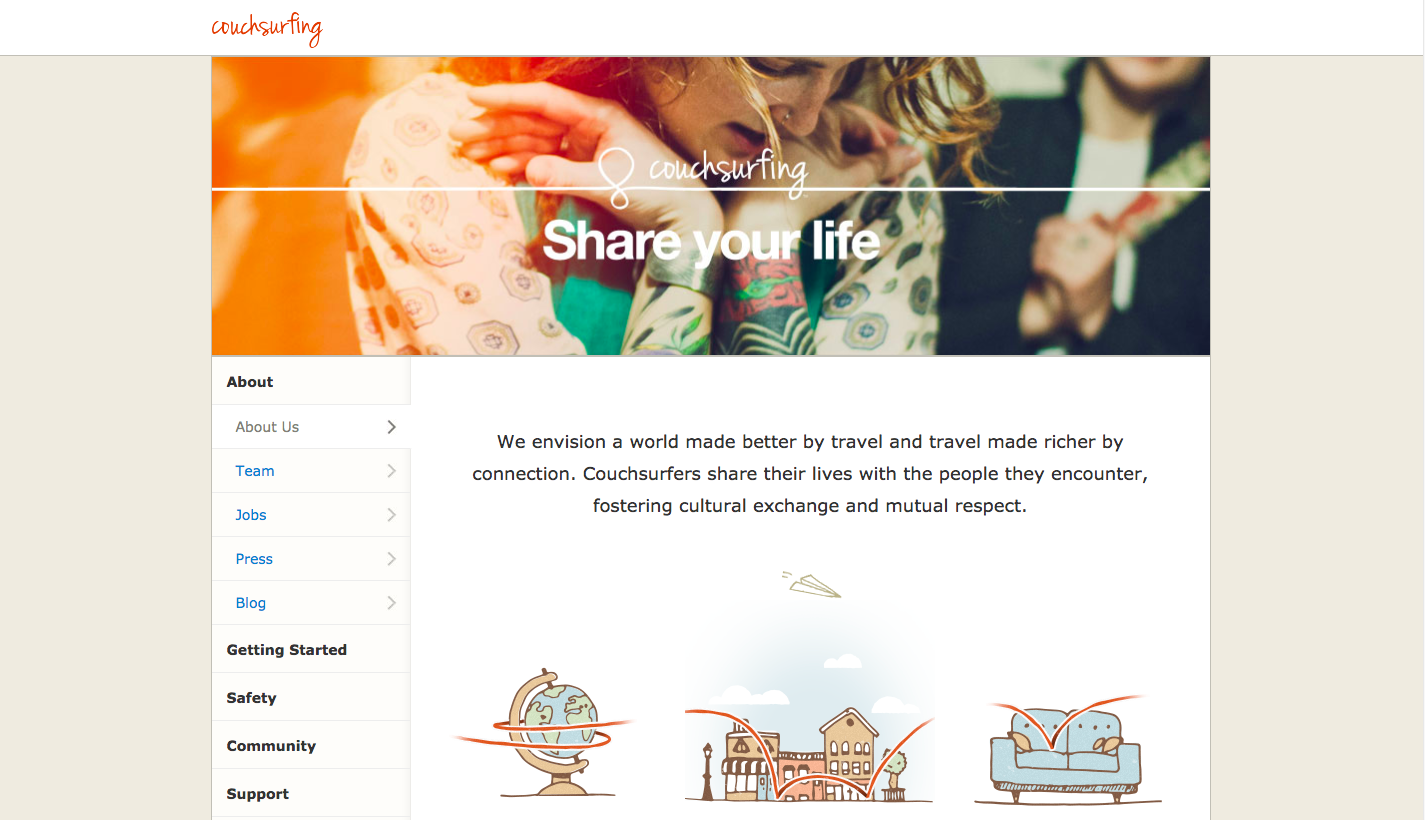
Couchsurfing for networkings
11. AncestryDNA
What it’s designed for: DNA tests and ancestry information Number of users: Estimated 10 million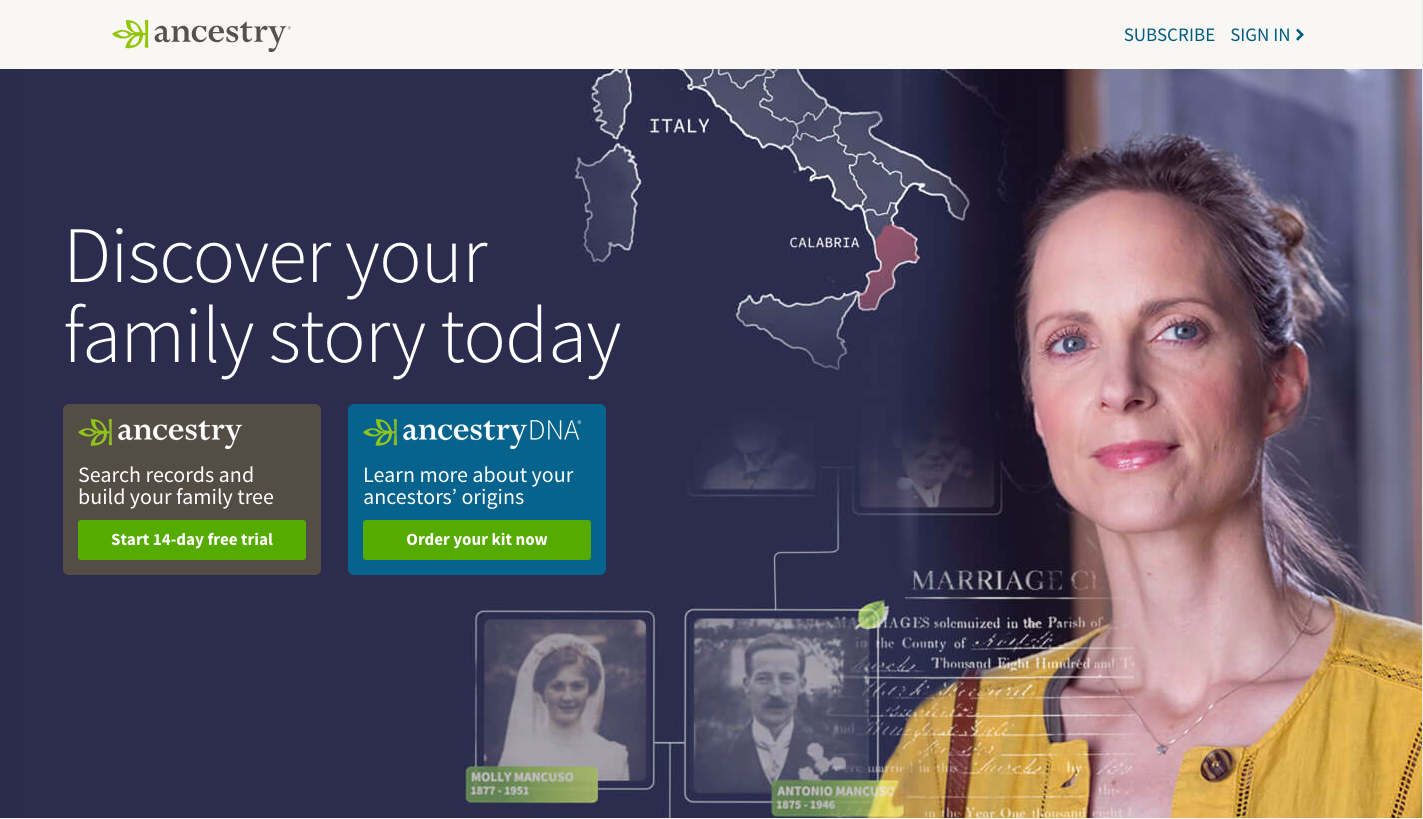
12. Hinge
What it’s designed for: Dating and relationships Number of users: Estimated 3.8 million
Hinge for networking
Methodology
We based the ranking of the 12 most surprising platforms for business networking on five categories.Not Designed for Business Networking
To qualify, the social network’s primary purpose could not be for business networking. This includes platforms such as LinkedIn, AngelList, and Gust, which are designed for professional and career-related use. This also included social networking platforms such as Facebook and Bumble that were not designed for business use, but have services created for businesses and professional networking.Available for Free
To make our list, the social networking platform had to be available for free. It also had to be available to the public, without subscriber limitations, and with no invitation or special code required.Minimum User Base of 1 Million
All social networks had to have a minimum user base of 1 million. This shows that the social network is well-established and has a large enough user base to provide a good deal of professional networking potential.Available Nationwide
Social networks typically start in a specific city and expand to other cities before growing into a nationwide network. However, platforms focused on one location limit the user base; to avoid this, we sought social networks that are available nationwide.General Interest Platform
To make our list, each social networking platform had to be of general interest. There are thousands of niche social networks, and while niche networks can be a highly effective way of networking, they are not necessarily relevant to a larger audience.Bottom Line: Surprising Platforms for Professional Networking
We may think our social networking apps are all fun and games, but it turns out they have incredible business potential. Led by character-first millennials, digital devotees are starting to use non-mainstream platforms to generate business ideas, build their professional networks, and uncover new job opportunities. If you’re looking for some new connections, browse our list of networking apps above and build out your professional Rolodex.
04.09.2019
IBN
standart
Rich Perry, First Generation Entrepreneur.LifeMost people I know in business have very good Time Management skills. They set out their goals, they prioritise their work and they make a daily task list to get things done. In days gone by that was enough. Forward planning meant that work could be scheduled into the time available. By and large, an organised person could get all their work done quite routinely. Imagine that? The Problem with Time Management But those Time Management techniques were designed for a business world where people had control over their time. It was a business world without Email, mobile phones, i-messenger, apps, i-pads, tablets and social media. Blocks of uninterrupted time were easier to find and in general the plan for the day could be completed as expected. New Challenges Technological advances have completely changed our work environment. Constant communication brings a steady stream of new requests and ever-changing deadlines. Allocating time to a task doesn’t mean it gets done. As soon as we check our email in the morning, our task list is already out of date! And when everything seems urgent it is impossible to stick to our priorities. As the day goes on the work plan can go out the window. Working Reactively The steady stream of requests means comes with an expectation of almost instant response time. So we generally work in a reactive, responsive mode. This great for customer service and team cooperation. But it’s not productive for the achievement of the plans and goals. And ultimately this will impact business growth as the focus becomes less strategic and more operational. Attention Management So in a way Time Management techniques have never been so important. But we need to supplement these techniques with skills to manage our attention. How good are your Attention Management skills? Is this something you have ever thought about? Here are some tips on how you can become more aware of your attention and then how to manage it. Understand Your Attention Do some initial work to understand where your attention is going throughout the day. Spot some patterns, track who and what distracts you. Use a timelog for a few days to get the data on this. Make a list of those attention stealers to remind you what to avoid. Then use a timer so you can check your progress versus your plan during the day. This will help you see where you have drifted on to another task without realising it. But it also helps you get back on track before too much rime has been lost. After a while you develop the skill yourself so the timer isn’t required. Protect Your Attention We often feel obliged to respond to new requests, new E-mails or interruptions. It can be hard to say no to your customers or your colleagues. But we often end up working on something that has a lower priority than the work we planned to do. To give you confidence to make decisions about what you should work on be clear about your responsibilities to your clients or within your role. What is a reasonable response time for clients? What has been agreed? Are you doing tasks that are not in your role? With this knowledge it can be easier to say no or at last negotiate a different response time. Develop the Right Environment If you run your own business take a look at how easy or difficult it is for people to focus. Is there a noise level that can be improved? Can you work together to give each person some “Do Not Disturb” time throughout the week? Encourage people to focus on one task rather than multi-tasking. If your business allows it, turn off the phones at least some of the time. Provide a quiet room as a contrast to the open plan office. Offer your office to your team when you are not there. Allow the use of noise blocking headphones if it doesn’t compromise your service delivery. Above all, be creative. Come up with your own solutions for Attention Management that will suit your business. Be Proactive, Take Control and Be Productive So let’s give some time to Attention Management. It is one of the most important business skills in today’s workplace. Combine this with the classic Time Management techniques and watch your productivity soar.
22.08.2019
John King
standart
01.08.2019
IBN
video
1. Take every opportunity to meet new people.
“The most important lesson I’ve learned in networking (and which I wish I’d known years ago) is to take every opportunity possible to meet new people. Don’t dismiss a single soul—you never know who you’re talking to, who they might know, or how they might be able to contribute. As my father always told me as a kid, ‘It’s not what you know, it’s who you know.’ That statement has proven so true, especially in a business networking setting.” —Lori Cheek, founder and CEO of Cheekd and Networkd2. Focus on how you can help.
“People often go to networking events seeking individuals who can help them. But I think this is the wrong approach: Networking is all about helping others. Engage in meaningful conversation, share your interests, and see how you can offer your resources to the other party.” —Anayet Chowdhury, cofounder of ArgoPrep3. Go alone.
“I find that it’s best to go to networking events alone so you’re forced to talk to new people. I also think it’s wise to do your homework in advance. If the attendee list is publicized, make note of who you’d like to meet beforehand. It may seem scary to go on your own, but remember that everyone is there for the same reason—they all want to make new connections. So don’t be shy; just walk up and introduce yourself! The only thing you have to lose is an opportunity.” —Lori Cheek4. Don’t forget your business cards.
“Never, ever leave home without your most essential, ‘old-school’ networking tool: Your business card. Even in the digital age, business cards are still the single fastest way to share who you are, what you do, and how you can be contacted.” —Lori Cheek5. Find a community.
“An easy way to find your tribe is to take classes. I particularly like attending General Assembly classes. Many are free, and they’re typically populated with knowledgeable teachers who are willing to help you troubleshoot beyond the classroom, as well as other experienced business owners in your industry.” —Orion H. Brown, Founder and CEO of The Black Travel Box6. Be sure to meet people in other industries, too.
Sticking with what you know has its place, but meeting people from other industries can be highly rewarding for your business and career. We’re an ed-tech industry, but we’ve recently invested in and partnered up on amazing projects in the entertainment industry after meeting impressive individuals at networking events.” —Anayet Chowdhury7. Make a networking goal, and stick to it.
“Find networking events through your local Chamber of Commerce website, Business Network International, Board of Trade, industry associations, Facebook events, and more. Start by setting a goal of going to one networking event per month. Hold yourself to it, regardless of how badly you may not want to go the day of the event! I set up Meetup.com as my default homepage on my internet browser so I can regularly keep my eye on upcoming events. This simple trick has helped me attend networking events more regularly.” —Mazdak Mohammadi, owner and founder of blueberrycloud8. Outline your objectives and target networking audience.
“In the early stages of my business, I was fumbling with networking and obtaining leads. But then I thought: I have a business plan and a marketing plan—so why not draft a strategic networking plan? I outlined my objectives, my target networking audience, the type of events I wanted to go to, and a budget. I encourage anyone, especially those going through a career transition, to create a networking plan. It’ll help you navigate that new environment with purpose.” —Michelle Ngome, founder of Line 25 Consulting9. Network with your customers.
“Put yourself wherever your customer is, whether that’s networking in person at trade shows, or virtually through online forums or social media. Either way, connect with your customers on their home turf and hear them out on their pain points. That way, you can better design your business or service to solve those problems.” —Erica Wassinger, cofounder of The Startup Collaborative10. Ask for introductions.
“People you already know can be the best resource for meeting new people in your industry. I typically send an email to 50-100 people already on my list, bcc everyone, and just write from the heart—I ask for feedback, make announcements about my business, or just plain catch up on the latest thing I’m working on. And always end your note with an ‘ask.’ I shamelessly plug that I’m looking for funders, product developers, and word-of-mouth referrals. So far I’ve yielded all three, just by emailing my existing network.” —Orion H. Brown11. Be kind.
“Prospective customers and jobs can come from anyone, anywhere, at any time, so always be on your best behavior. Focus on making friends with people before you need them for their connections—you never know who is in, or will be in, a position to help you out down the line. A few other networking tips: Remember to bring plenty of business cards, don’t try to monopolize anyone’s time, send follow-up notes to the best prospects, and don’t get into political discussions with people you don’t know!” —Paige Arnof-Fenn, founder and CEO of Mavens & Moguls12. Attend industry happy hours.
“I know not everyone likes to drink, but grab a club soda with lime and get out to industry happy hours. Not sure where to find them? Keep it simple. If you sell a product or service, then you are a marketer. Try your local American Marketing Association chapter. They typically hold monthly events that attract all industries.” —Orion H. Brown13. Listen more than you speak.
“It may be tempting to get as many words in as possible, but I’ve found it’s a much better strategy to focus on the quality of your words, not the quantity. That way, everything I’m saying is worthwhile, and, more importantly, it lets the other person fill the empty space. People are much more likely to remember an engaging conversation than a single thing that someone told them.” —Jerry Haffey Jr., president of Business Development at Ambrosia Treatment Center14. Connect on non-business topics.
“It’s much easier to build successful business relationships when you connect with people on a deeper level than simply business. Most successful networking experiences I’ve had began with topics that weren’t work-related at all, like hobbies or book recommendations. Even when at a business event, be willing to share what you’re truly passionate about. Once you establish common ground, you can build a strong network of friends and experts in diverse fields. With that common ground, you’ll feel comfortable asking for advice when you need it, and you’ll be happy to offer your advice in return. All in all, networking is about building trust, and giving as much as receiving.” —Rune Sovndahl, cofounder and CEO of Fantastic Services15. Make the first move.
“When I was just starting out, I reached out to anyone and everyone who would take a few minutes to share their story with me and listen to my pitch. It was so helpful for me to get an idea of what it’s like to be a business owner, and I received some excellent feedback on my business model and product. When I reached out to those experts and small business owners, I was straightforward about my inexperience and my desire for help. I think my honesty made people even more willing to chat with me and share their advice.” —Ally Compeau, founder of Woof Signs16. Don’t expect immediate gratification.
“Don’t get discouraged if you don’t meet people who can immediately help you. Many of the most valuable network leads I’ve gathered came from people who remembered me, then later introduced me to people they knew who would be beneficial for my business.” —Orion H. Brown17. Relax.
“There’s a saying in business that ‘People do business with people.’ It’s important to remain professional at networking events, but you should try to approach everyone with a kind and informal attitude. People may be slightly put off if you’re overly formal or stiff. And everyone there is looking to make new connections and gain valuable insights from each other. So, eventually, something will naturally come up in conversation that you’ll find relevant and useful. (This is especially likely if you researched the attendees in advance.) Just relax, enjoy the event, and the right insights will come your way.” —Steve Pritchard, HR consultant at AngloLiners18. Practice.
“Nervous? Keep on networking. Socializing is like a muscle; the more you do it, the stronger your socializing skills become.” —Jason Patel, founder of Transizion19. Focus on building relationships.
“Networking should not be mistaken for the face-to-face version of a ‘cold call.’ Instead, focus on building relationships and adding value to those relationships. Whether you’re just meeting someone or following up with an existing contact, ask yourself the magic question: ‘How can I help you?’ By making it about them and not you, you’re more likely to build the trust needed to sustain a working relationship and add value to those relationships. Ultimately, you’ll get as much as you give.” —John Baker, chief technology officer, DeployBot20. Keep in touch.
“Following up is absolutely key in networking. Boomerang on Gmail lets you schedule emails and set reminders in case people don’t respond to an initial email. If you just met someone and want to keep in touch with them, schedule an email that asks how they’re doing, and offer a chance to meet again when your schedules free up. This keeps you from writing emails in real time when time is of the essence. It’s a big time-saver. Also, connecting on LinkedIn is a no-brainer. Don’t have a LinkedIn? Take 30 minutes to create a profile. It’s free.” —Jason Patel
31.07.2019
IBN
standart
